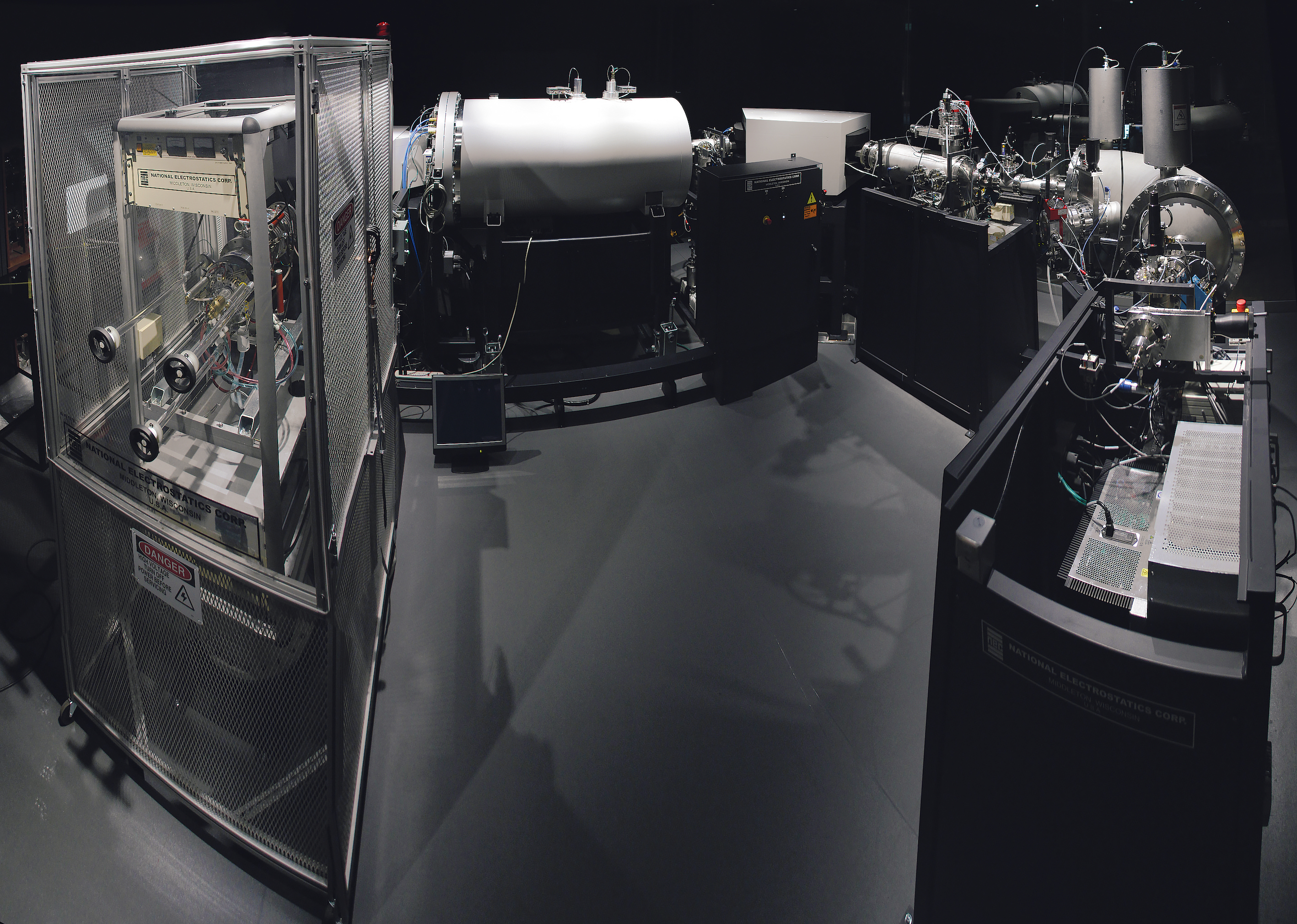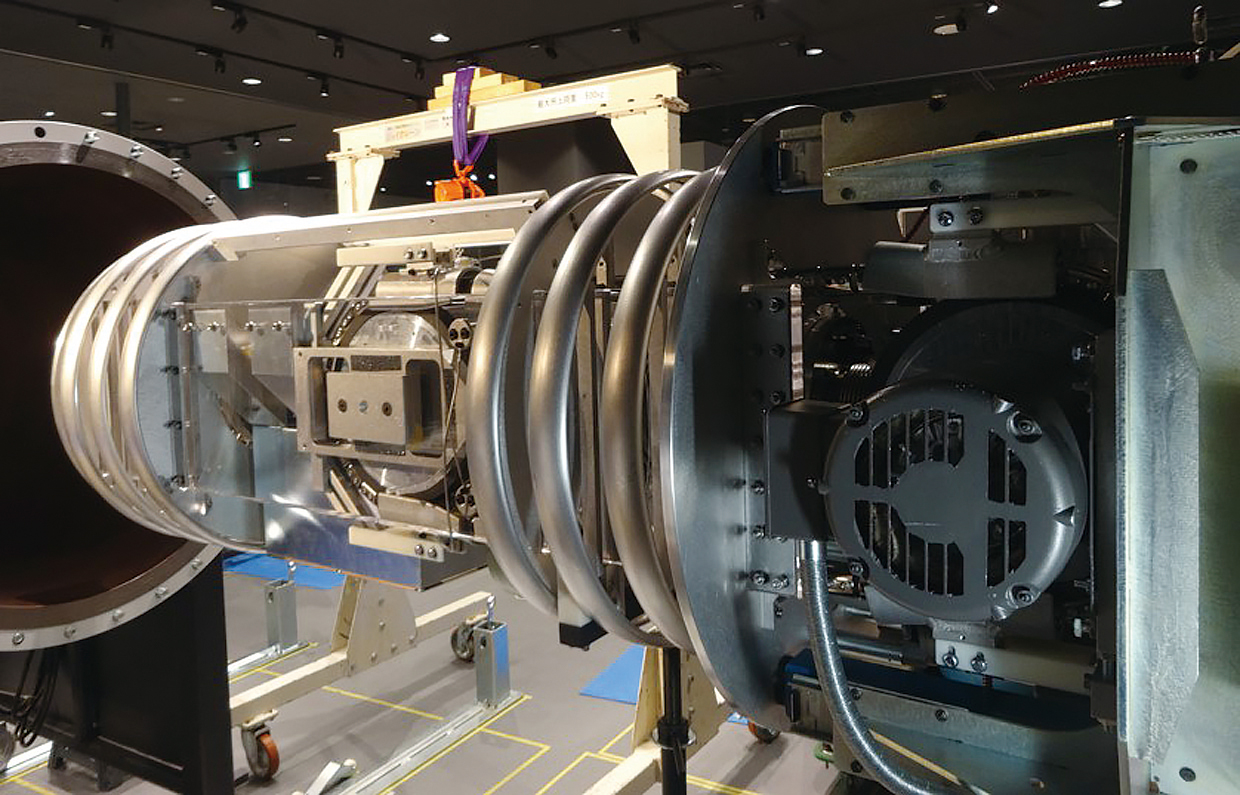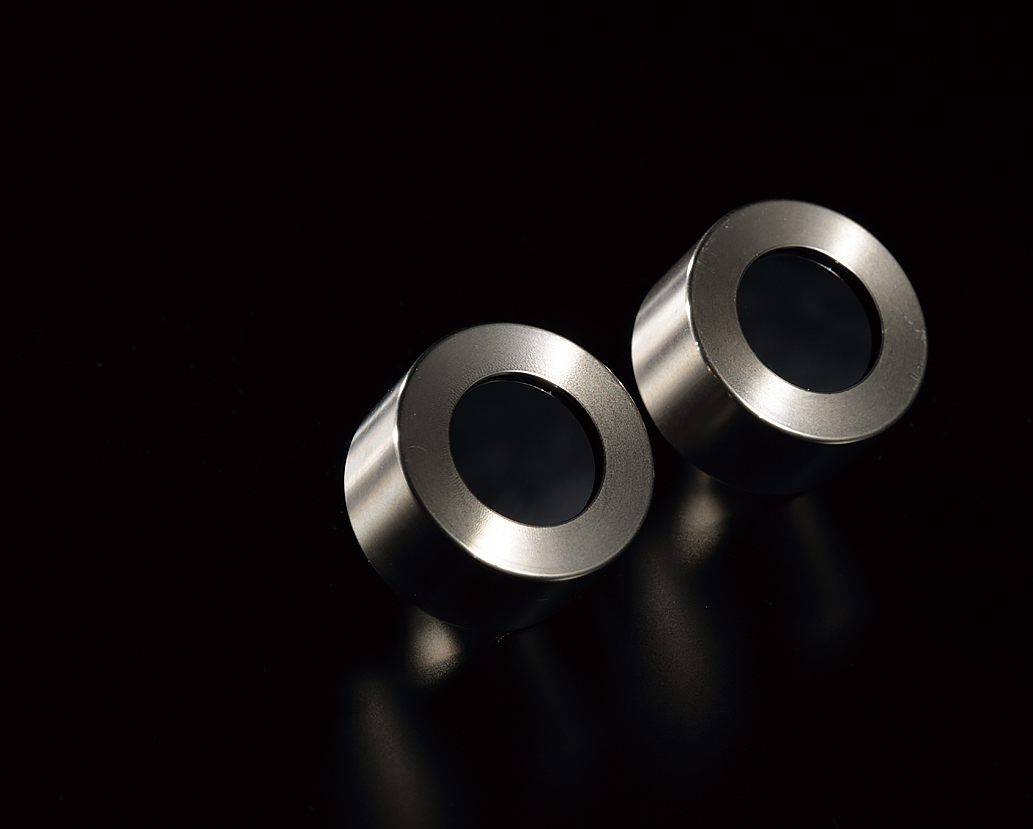H1
Accelerators originally developed for physics are applied for chemistry
Originally accelerators had been developed for nuclear physics experiments. Particles are accelerated to high energy and collide with the materials. The high energy collisions create new particles and play a major role in elucidation of their properties and discovery of super-heavy isotopes. Then, various types of accelerators have been developed in accordance with the purpose. The accelerator, Van de Graaff type electrostatic accelerator, is also one of those accelerators for nuclear physics and now it is utilized as a major part of compact Accelerator Mass Spectrometer (AMS) exhibited here.
To incorporate the accelerator in mass spectrometry system causes several advantages, it will play an effective role in the measurement for a very small amount of long-lived radioactive nuclides. Tandem accelerator incorporated in the accelerator mass spectrometer has charge exchange system inside, become easier to remove molecular ions interfering measurement of target ion at the same time. Furthermore, it has enabled counting of nuclear detectors by giving high energy to the ions to be measured by an accelerator.
Since accelerators are large-scale and radiation generating apparatus, they cannot be installed in open places. So there is no opportunity to be shown generally. However, we exhibited one “compact” AMS here. Because acceleration voltage of accelerator in this compact AMS is as small as 500 kV and not to be regarded as a radiation generator legally, you can see AMS installed in the exhibition area here. (Minoru Yoneda & Hiromasa Ozaki)



